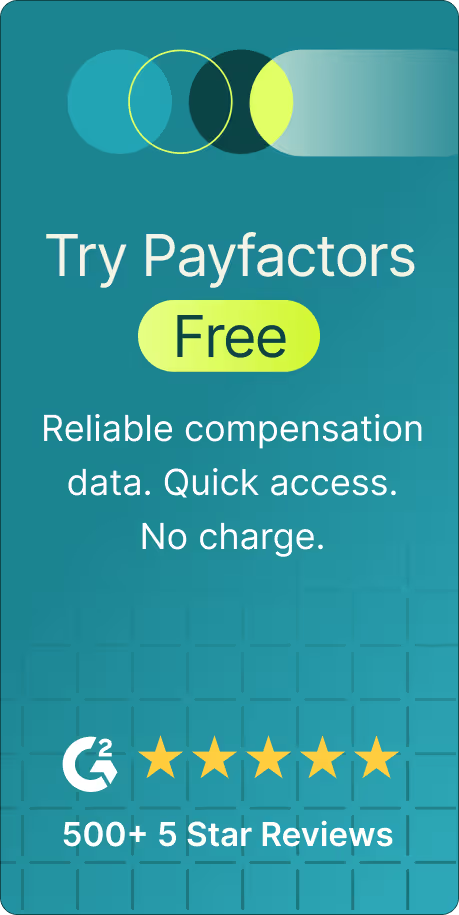Employers have significantly decreased hiring in AI-exposed jobs for younger workers.
A paper from Stanford’s Digital Economy Lab recently made the rounds on social media. It's discoveries were startling.
Controlling for factors like outsourcing and firm-specific layoffs, ChatGPT’s arrival in late 2022 triggered an immediate decline in early-career hiring for some roles.
Sara Hillenmeyer, VP of AI and Data Science at Payscale, explained what’s going on in a recent webinar.
AI-exposed jobs like Software Engineers and Customer Service Representatives tell an almost identical story: early-career workers have the most to lose.
The problem?
If entry-level positions in certain fields vanish, where will tomorrow’s senior-level employees come from? Take compensation analysts as an example.
We’re accustomed to teaching them the job through hands-on work. But if that work is replaced with AI, how will they learn fundamental skills?
More importantly, what does this mean for workforce planning and hiring?
Dr. Scott Mayott, Compensation Manager at KinderCare Learning Companies, offered his take on the webinar.
Why does Scott advise up-leveling your existing workforce on AI? Well, for starters, AI talent is in short supply.
Employers are offering large pay premiums for AI-fluent workers, but this isn’t necessarily translating into productivity gains.
Think about the skills your workforce will need in the coming months (and years) and focus on training your existing employees on AI, instead of making them obsolete.
Quantifying AI skills
How much are AI skills worth? We’ve previously discussed the “superstar model” for compensating AI skills — throwing hundreds of thousands of dollars (even seven-figures paychecks for some big tech companies) at those with AI skills.
We’ve also pointed out why this often doesn’t work. True game-changing AI talent is scarce. It’s also prohibitively expensive for most organizations.
During the webinar, Scott offered a simple way of calculating AI pay premiums — one that doesn’t necessarily require inflating base salaries.
Scott makes some great points here, and it’s worth breaking them down.
Whether you fall on the side of compensation as an art or science, it has a quantifiable component. And when it comes to AI skills, you must consider the business case.
Think about it this way:
A content marketer earning $90,000 per year works 2,080 hours annually. If AI tools save them five hours a week that translates into 260 additional productive hours per year.
This raises their effective output to $101,250.
Should you pay them more?
For many companies, the answer is a resounding yes. An 11k salary increase for that level of productivity gain makes sense.
But for other orgs (especially smaller ones) alternative rewards may be more sustainable, such as:
- Spot bonuses for AI fluency
- Retention payouts tied to AI skills development
- Performance-based incentives
Why consider alternatives to base pay increases? Because in 2-3 years, AI literacy will likely be table stakes. Baking premiums into base salaries today could create unsustainable salary inflation tomorrow.
HR leaders also have a responsibility to benchmark AI skills across all jobs, not just tech positions. These tools will drive productivity gains across industries and roles, and our compensation structures must reflect this reality.
It should never be “Who built the AI tool?” Instead, how do your pay practices reward employees using it consistently to drive results?
If you’re only compensating data scientists for AI while your financial analysts, marketers, and operations team leverage these tools daily without recognition, you’re missing the bigger picture.
Payscale’s AI market pricing tools
Let’s return to our own Sara Hillenmeyer. She’ll discuss how Payscale is helping companies prepare for the AI job boom.
AI’s impact on compensation can’t be taken lightly. It requires real-time data and AI-powered tools that keep pace with the changing talent landscape.
Traditional salary surveys fail to capture how quickly “AI jobs” are reshaping job pricing. By the time survey data is published, the market has already moved.
Want proof? We have seen a 33% increase in AI jobs since May 2025.
HR teams need faster, smarter insights to make informed decisions about AI-related pay premiums, benchmarking, and workforce planning.
Payscale Verse uses AI to solve this exact challenge.
Our data comes directly from the HRIS systems of more than 5,000 organizations with 9 million priced jobs across different industries, locations, and company sizes.
Verse uncovers patterns from this HR-reported dataset and fills in the gaps.
This means you can price jobs specific to your organization with confidence.
But it goes deeper than that. Our AI model doesn’t just aggregate data — it helps HR teams understand the compensable factors driving pay for specific roles.
HR leaders ask, “What AI tools are being used in compensation right now?” Well, this is it. AI that learns, adapts, and helps you make smarter pay decisions.
Payscale isn’t just providing data. We’re equipping HR teams with the AI fluency they need for this coming workforce transformation
Because becoming AI-fluent yourself means knowing how to use tools for better outcomes, creating a compensation strategy that makes a real impact.

.avif)







.avif)
